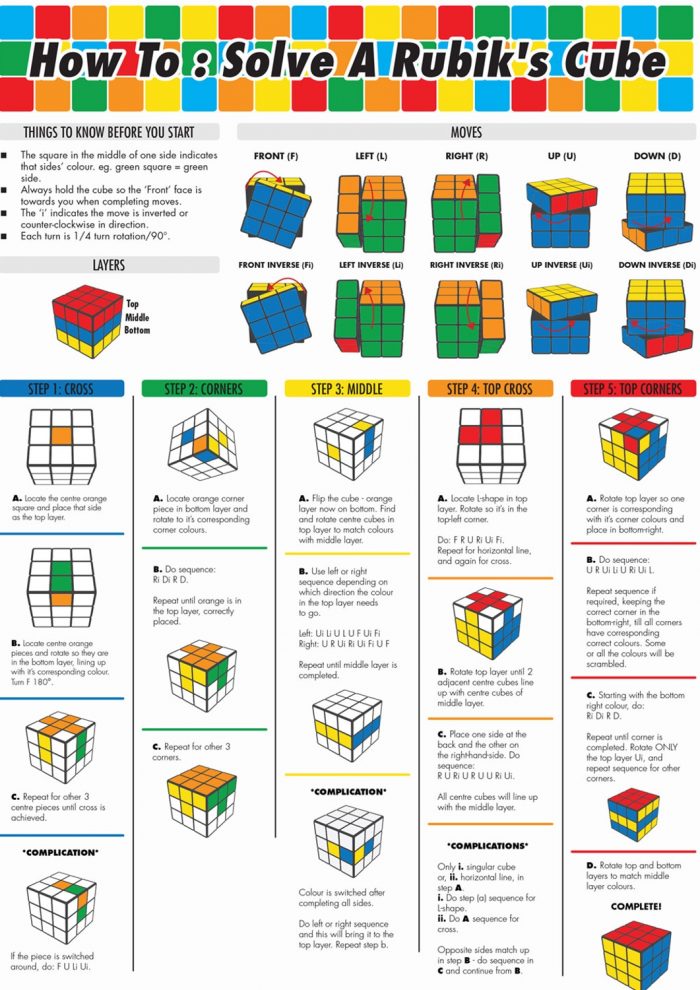
Whether you’re the puzzle-loving prodigy of your family or simply someone who wants to master this decades old classic, learning how to solve a Rubik’s Cube is easy. With a few simple tricks, you’ll be an expert in no time at all. This infographic contains in-depth explanations of each step of the solution, as well as tips and techniques for solving the cube. If you are familiar with some notation but need help understanding it more completely, or if you don’t know anything about Rubik’s Cube solving, this is the article for you!
The Rubik’s Cube is the world’s first, best-selling and most popular puzzle. Just because it’s simple does not mean it can be solved easily. This guide breaks down how to solve a cube for beginners and give tips for advanced players. Have fun solving your cube!
Welcome to the definitive guide on how to solve a Rubik’s cube! In this article, I’ll cover some of the most common methods for solving a Rubik’s cube, including beginner methods and advanced algorithms. Some of these methods use notation systems that are specific to each method, so it’s important you know which notation system your method uses. It is important to learn the notations for the method you use. This way you can read algorithms written in that notation system. There are many notation systems for the method you use and they all have advantages and disadvantages. Some methods use their own notation system, while others rely on other systems such as BAM (Backwards, Anti-Clockwise) or CFOP (Cross, F2L, OLL/PLL).
Solving a Rubik’s Cube is not an easy task. However, with some practice and patience, anyone can solve one of these puzzles. It is important to go slow at first and make sure every move you make is correct before continuing on to the next step.
